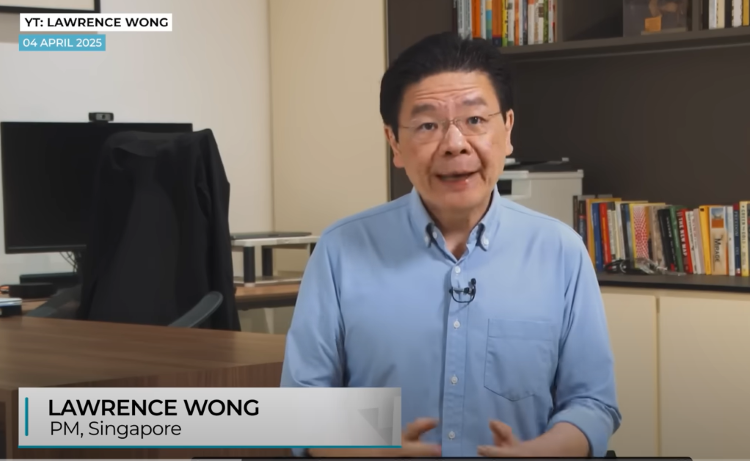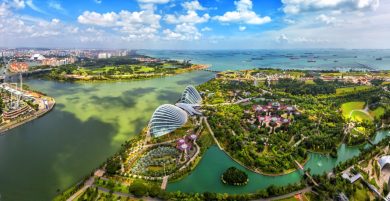How Asian Chiefs Dealt with Trump in Tariff Wars

By Ivan Lim
Former AJA President, Contributor to AsiaN
SINGAPORE: President Donald Trump unleased his Liberation Day tariff offensive on April 2 with a vengeance – threatening to slap huge duties on nations enjoying trade surpluses unless they negotiate to redress and reverse the gaping trade imbalance with him.
The Make America Great Again (MAGA) leader quickly set off a scramble by Asian leaders to be in Washington for talks before a Aug 1 deadline kicks in.
The big rush was expected as they try to gain favorable terms through engaging the mercurial deal-maker and continue to enjoy access to the US markets.
But while the master of the Art of the Deal seeks to win big and act from a position of strength, he did not reckon with the Oriental sophistry of his interlocutors from Asia and South-east Asia.
From the Art of War by Sun-tzu, political leaders in Asia have absorbed the wisdom of win-win outcomes for long-term solutions to disputes. This is Xi Jin-pin’s response to Trump’s tariff’s war.
However. unlike China, other Asian states could not respond to United States. from a position of parity. But they could be just as sophisticated in winning over protagonist through charm offensive.
South Korean President Lee Jae Myung displayed Korean courtesy, if not obeisance, as to an elder/superior in his first-ever summit with President Trump.
To add a family touch, he presented special gifts that tucked at the latter’s heartstrings, including custom-made golf putters and Maga-style hats.
And when the American host gushed over the hand-crafted wooden fountain pen his VIP guest used to sign the guest book, Mr Lee immediately offered it to him, helping to seal their bonding.
The cordial atmosphere produced a favourable for America’s security ally – a tariff rate of 15 per cent. In return, Seoul offered to invest more in US, including a US$150 billion to re-vitalise shipbuilding in US.
Thailand and Cambodia, both trading partners of US, faced tariffs of 36 per cent when their border dispute flared into a five-day skirmish. Under pressure from peace-maker Trump, they agreed to a ceasefire, as a pre-condition for tariff talks with Washington.
With little leverage, Cambodian Prime Minister Hun Manet sought to win over President Trump by nominating him for the Nobel Peace Prize. That gesture was good enough to win the country a concessionary tariff rate of 19 per cent. Thailand also got the same rate.
Tying their security to the United States, both Philippines and Japan found themselves in weak bargaining position in their tariff negotiations with Trump. Lacking economic heft, President Ferdinand Marcos Jr. has sought to gain points with Mr Trump by standing up to Beijing South China Sea dispute and offering naval bases to US. Manila got a 19 per cent tariff deal.
Japan played the long game by giving Trump the glamour of scoring in the trade pow-wow, declaring a baseline 15 per cent tariff. down from 25 per cent, on all Japanese goods plus sectoral-specific duties on automobiles, aerospace and pharmaceuticals. Tokyo also agreed to invest up to $550 billion in US designed to enhance US “prosperity for generations”.
Coming down to the details of implementing the “historic: accord is where the Japanese will seek to ensure there is a win-win outcome. For one, they want to ensure the capital investment commitment will take the form of loans and lines of credit. Japanese commentators also call for a principled stand to protect the free trade system as the resource-poor country cannot afford, unlike US. to adopt a Japan First policy.
Indonesia and Malaysia offer a contrast to the two US treaty partners. By leveraging on their relations with China and on Asean centrality, Jakarta and Kuala Lumpur could strike a package deal with Trump headlined by 19 per cent tariff rate. Other items include billion-dollar investments pledges, tax exemptions on and purchase of US goods. A special proviso is a blanket 40 per cent tariff on transshipment of goods, mainly directed at China.
Of the ASEAN states, Singapore’s baseline 10 per cent rate is a steal but offers no comfort to the city-state which thrives on free trade. It also goes against the letter and spirit of its US-Singapore free trade agreement
What is worst, Its key exports in pharmaceutical and semi-conductor items also face sectoral tariffs.
While in no position to challenge the adverse moves of its largest trading partner, Singapore has sought to engage Washington to achieve win-win outcomes. An economic resilience taskforce is working on measures to help enterprises, and employees manage the impact of the tariffs on the economy.
Strategy-wise, Prime Minister Lawrence Wong is looking beyond the tariffs to Trump’s
America First policies which are set to upend the global trade system and heighten geo-political tensions.
“We see a rising ‘me-first’, win-lose mindset (at work) where it is every country for itself,” he said.
“The US may have decided to turn protectionist but the rest of the world does not have to follow the same path.”
That dictates breaking free of US dominance. The republic is moving to rally like-minded free trade partners India, China, Japan, South Korea and European Union to uphold the multi-lateral trading system and work to boost trade and investments within the framework of free-trade agreements, including the Trans-Pacific Partnership and Regional Comprehensive Economic Partnership.
A head start has been made with Singapore inking new trade pacts with India during PM Wong’s visit and meeting with Mr Narendra Modi on Sept 4. The Indian leader’s bromance with Mr Trump has been soured by the punitive 50 per cent tariff slapped on India for buying Russian oil that is seen as helping support Putin’s war in Ukraine.
Already, Initiatives to boost intra-Asean trade have taken off in the form of Singapore-Johor special economic zone.
The Trump tariff offensive might have cast a shadow over the thriving metropolis as it celebrated its 60th birthday as an independent nation on 9 August.
Taking the protectionist challenges in stride, the city-state’s new fourth-generation leaders are determined to show that “exceptional” Singapore will triumph in the face of adversity.



